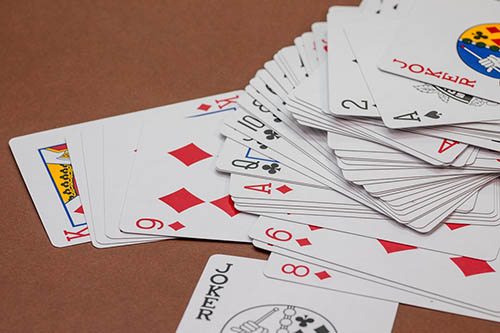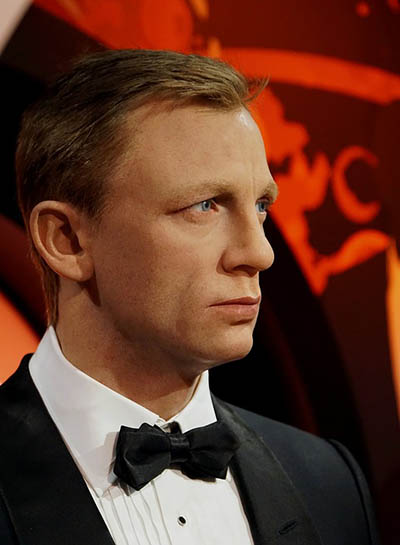
|
| « Articles | History of Playing Cards | Gallery of Playing Cards | Card Games Rules | CONTACT |
Baccarat: The History of the World's Biggest Card Game
Baccarat is the world's biggest card game. It has a fascinating history, having spread from Europe to Asia and most recently to the US.
Before we delve into the history of baccarat, it's important to put the game in context. Forbes describes it as "the number one casino game in the world", reporting that, in 2017, the 40 casinos in Macau made $33.2 billion - and a staggering 88% of that came from baccarat.
Baccarat is now taking off in the US. It already accounts for 18% of the total casino wins along the entire Las Vegas strip, and industry professionals are expecting this to continue to rise.
A Quick Introduction to Baccarat
Baccarat is one of the simplest casino games to play. Players have to do little more than decide whether to wager (and how much to wager) on the player's hand, the banker's hand or a tie.
Once the player has placed their bet, the dealer draws four cards - two for the player and two for the banker. Further cards are drawn depending on those that have been dealt, with the winner being the hand that adds up closest to nine (ten, jack, queen and king all count as zero in this game).

The Origins of Baccarat
While the precise origins of card playing in Europe are lost to the sands of time, the history of baccarat is more well known. An Italian named Felix Falguiere, or Falguierein, is usually credited with creating the game back in the 1400s. 'Baccara' is Italian for 'zero', in reference to the fact that tens, jacks, queens and kings all have zero value (though the French spelling, 'baccarat', was the one that the world embraced).
The earliest likely version of baccarat was less simple than the modern-day game. There were four different dealers, with each player having a chance to be the banker. Not only could players wager against the house, but they could also bet against each other.
Baccarat became popular in Italy among wealthy players. Indeed, it remains a game that is particularly popular with high rollers, even now.
From Italy, baccarat spread to France, most likely thanks to soldiers bringing it back with them from the Italian conflicts of the 1490s. The French nobility embraced it with gusto, and baccarat became a favorite game of King Charles VIII and his court.
The French played two versions of the game: 'chemin de fer' and 'baccarat en banque' (also called 'baccarat deux tableux'). So popular was the game that players continued to play it illegally even after Louis Phillip banned casinos in 1837.
Baccarat and James Bond
When the game spread to England, baccarat maintained its reputation as a game for noblemen, with the aristocracy embracing it just as enthusiastically as they had in France.
One of those who enjoyed playing baccarat was author Ian Fleming. The James Bond creator shared his passion with his most famous fictional character. Baccarat is of major importance in the very first 007 novel, Casino Royale, although the 2006 film replaced it with no-limit Texas Hold'em poker.

According to Bond Lifestyle, baccarat also features in Dr. No, Thunderball, On Her Majesty's Secret Service and GoldenEye. The Bond association did much to add to baccarat's reputation as an elegant game for high rollers.
A Game of Ancient Origin
While many believe that Felix Falguiere invented baccarat in the 1400s, he may have drawn some of his inspiration for the game from earlier times. Ancient Rome's vestal virgins rolled a die to determine their fate. A score of eight or nine meant a future as a high priestess, while a six or seven meant losing their religious credentials (which was far better than the alternative, as scores of five or lower meant walking into the sea to drown).
Some also believe that the ancient Chinese game of pai gow (meaning 'make nine') may have influenced the creation of baccarat, though pai gow players used tiles instead of cards. Indeed, some also believe that playing cards themselves originated in China, although there is no way of knowing this for certain.
Baccarat Today
Baccarat had reached the US by 1871, as evidenced by a New York Times article from that year that refers to a baccarat board. It is growing in popularity there, while in Asia it is already huge. As a game of chance rather than skill, there is a strong attraction for those who have faith in their own luck.
Baccarat has also taken off massively online, with casinos such as Betway allowing players to enjoy baccarat live, any time of the day or night. Indeed, baccarat is one of a number of vintage card games that have experienced an upswing in recent years as a result of live streaming, with real dealers allowing players to experience the classic title from home like never before.
The game continues its association with high rollers, both online and offline. Former Nevada Gaming Control Agent Bill Zender reports that casinos in Singapore will accept bets on a single hand of as much as $750,000 SGD (about $550,000 USD), while those in Las Vegas might accept bets of as much as $150,000 for a single hand. This means that the stakes can be incredibly high for baccarat players - as well as for the casinos.
Baccarat has already taken the world by storm. In time, and with new technology pushing the boundaries of what is possible, it will be exciting to see where this game of chance can go next.
|
|
|
|